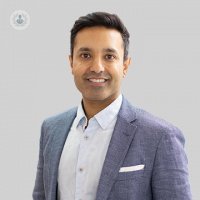Conscious sedation for dental procedures: your questions answered
Autore:What is conscious sedation and how is it used in dentistry?
Conscious sedation is a treatment offered to patients who have anxiety or who suffer any pain or discomfort during treatment.
It is administered by a sedative drug which helps patients to feel relaxed during their treatment.

What drugs are used for conscious sedation?
Many clinics use use a sedative called midazolam. It is administered in the arm or the back of the hand through an intravenous line.
Midazolam is safe, fast acting and helps patients get to the desired sedation for dentists to treat them safely.
Is conscious sedation safe?
Yes, conscious sedation is a safe procedure. Patients are awake but in a more drowsy and sleepy state.
Blood pressure and heart rate can drop slightly during treatment therefore dentists will monitor both very closely throughout the procedure.
What are the risks and side effects of conscious sedation?
The desired side effect of conscious sedation is that it makes the patient drowsy.
It also has an amnesia effect, therefore patients don’t remember much of the treatment afterwards.
Additionally, conscious sedation can cause patients to feel heavy bodied and sluggish. Following the procedure, they will feel tired for the remainder of the day.
Undesired side effects following the procedure are rare. Some of these effects may include feeling heavy headed/having a headache for the rest of the day or more rarely, patients can experience hiccups for the next 12-24 hours.
What are the alternatives to conscious sedation?
Conscious sedation is something that permits dentists to treat many patients in their dental clinic.
It is a brilliant option for patients with anxieties and can be used for a range of treatments including root canal, deep gum cleaning and implants.
It can also be used for patients who are not very anxious but are undergoing complex procedures such as wisdom tooth removal. Patients may not be anxious but they may want to feel more relaxed and do not want to remember the procedure afterwards.
The alternative to conscious sedation includes a general anesthetic. This must be carried out in a hospital. It demands more of the patient’s time because they need to dedicate a lot more time during the day for the procedure.
It also has more side effects, as well as higher associated risks and costs.
However, for those who want to be completely unaware of what is happening during the procedure, general anestheia is an option.
What are the steps of conscious sedation?
When patients wish to undergo conscious sedation, they will have a consultation at the dental clinic.
At the consultation, dentisits will check the patient’s medical history, to ensure that they are fit and healthy and can therefore have conscious sedation at the clinic.
They also check blood pressure and oxygen saturation, as well as during the procedure.
Dentists will explain the treatment in detail, request the patient’s consent sand ensure that both they and the patient understand what will happen on the day of sedation.
When possible, some dentists try to plan the sedational appointments for the morning, so that patients do not have to worry throughout the whole day.
On the day of sedation, when the patient comes to the clinic, there will often be three people in the room; the dentist, the dental nurse and the sedation nurse.
The dentist will usually sit the patient in the chair and administer a line in the arm or the back of the hand to which the sedative will be placed.
The sedative is administered in incidence to ensure that the patient reaches the correct level of sedation to be treated safely and comfortably.
The team will then check blood pressure and offer saturations again and will continue to do so until the procedure is finished.
When treatment is finished, dentists will ensure that the patient is passed to their chaperone safely, who will look after them, following detailed instructions, for the rest of the day.


